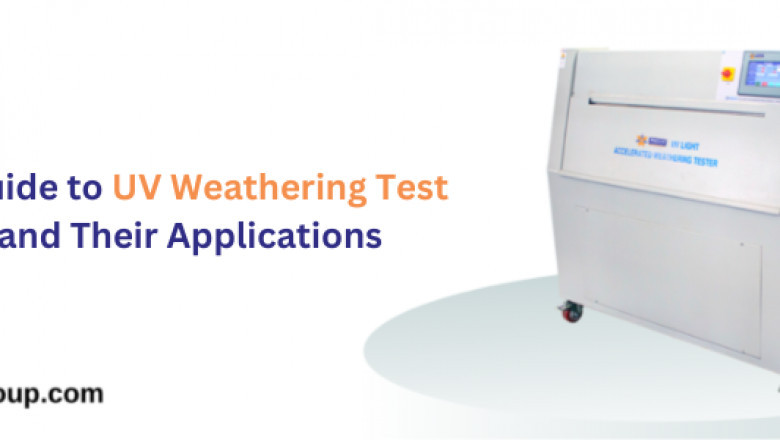views
What is a UV Test Chamber?
A UV test chamber is an advanced laboratory instrument used to accelerate the aging process of materials by exposing them to controlled levels of UV light, temperature, and humidity. These chambers help in evaluating the resistance of materials like plastics, paints, coatings, textiles, and polymers to environmental stress.
UV Test Chamber Working Principle
The UV test chamber working principle is based on simulating natural sunlight using UV lamps. The chamber subjects test specimens to cyclic exposure of UV radiation, moisture (through condensation or water spray), and controlled temperature. The key processes involved in the UV aging test include:
-
UV Exposure: The chamber uses fluorescent UV lamps that emit radiation similar to sunlight to accelerate material degradation.
-
Moisture Simulation: Water condensation or direct spray mimics dew and rain exposure.
-
Temperature Control: Controlled heating cycles allow replication of day-night temperature variations.
-
Continuous Cycle Testing: The chamber runs cyclic exposure, mimicking years of natural weathering within weeks or months.
Applications of UV Weathering Test Chambers
UV test chambers are widely used across industries to evaluate material resistance to UV exposure. Some common applications include:
-
Paints and Coatings: Ensuring coatings remain durable under sunlight exposure.
-
Plastics and Polymers: Testing for discoloration, cracking, or loss of mechanical properties.
-
Automotive Industry: Evaluating the durability of vehicle exteriors and interiors.
-
Textiles and Fabrics: Testing colorfastness and fiber degradation.
-
Packaging Materials: Assessing resistance to UV-induced brittleness.
Types of UV Weathering Testers
Several types of UV test chambers exist to cater to different testing requirements:
-
QUV Weathering Tester: One of the most popular UV accelerated aging chambers, the QUV tester is designed to replicate realistic weathering conditions. It provides precise control over UV exposure and moisture cycles.
-
QUV Test Chamber: Similar to standard UV test chambers, QUV chambers are widely used for accelerated aging tests in various industries.
-
UV Environmental Test Chamber: These chambers simulate a broader range of environmental conditions, including humidity and temperature fluctuations.
Benefits of Using UV Accelerated Aging Chambers
Utilizing a UV accelerated aging chamber provides manufacturers with significant benefits:
-
Predicts Product Lifespan: Identifies potential material weaknesses before mass production.
-
Reduces Development Time: Accelerated testing shortens research and development cycles.
-
Ensures Compliance: Helps manufacturers meet industry standards such as ASTM, ISO, and EN standards for weathering resistance.
-
Improves Product Quality: Enables the selection of better raw materials and coatings for enhanced durability.
Factors Affecting UV Test Chamber Performance
To achieve accurate test results, several factors must be considered:
-
UV Lamp Type: Different lamps produce varying wavelengths, impacting test outcomes.
-
Exposure Duration: Longer exposure times simulate extended real-world aging.
-
Temperature and Humidity Levels: Controlled variations improve test reliability.
-
Sample Positioning: Ensuring uniform exposure is crucial for consistency.
UV Test Chamber Price and Considerations
The UV test chamber price varies based on size, features, and brand. Factors influencing cost include:
-
Testing Capacity: Larger chambers accommodate more samples, increasing the price.
-
UV Light Source: Advanced lamp technologies impact pricing.
-
Automation and Software: Digital control panels and data logging increase functionality.
-
Manufacturer and Brand: Well-known brands offer higher quality but at a premium.
A UV test chamber is an essential tool for industries that require weather-resistant materials. Whether assessing paints, plastics, textiles, or packaging, these chambers provide valuable insights into how materials degrade under UV exposure. Investing in a QUV test chamber or UV weathering tester ensures better product durability, compliance with industry standards, and enhanced market reputation.
Manufacturers looking for UV test chambers should consider performance, price, and specific application needs to make an informed decision. By incorporating UV testing in product development, businesses can significantly improve material quality and customer satisfaction.






















Comments
0 comment